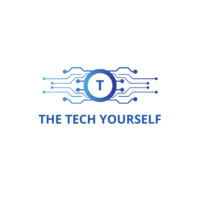In the fast-paced world of technology, staying one step ahead is no longer a luxury—it’s a necessity. That’s where technical guides come in. These comprehensive resources provide a roadmap for navigating complex tech landscapes, from software development to hardware troubleshooting.
Technical guides are the unsung heroes of the tech world. They demystify the complicated, break down the complex, and serve as a lifeline when you’re lost in the labyrinth of tech jargon. Whether you’re a seasoned pro or a tech newbie, these guides are your ticket to understanding and mastering the digital world.
So, let’s delve into the world of technical guides, exploring their importance, their varied forms, and how they can be a game-changer in your tech journey. Stay tuned as we unpack the world of technical guides, your indispensable partners in the realm of technology.
Technical Guides
 Delving deeper into the realm of technical guides, let’s understand their significance, the varieties, and how they cater to varied technological needs.
Delving deeper into the realm of technical guides, let’s understand their significance, the varieties, and how they cater to varied technological needs.
Technical guides hold immense importance as they demystify intricate technicalities. They act as reliable reference documents, particularly when mastering a new skill or solving complex technical issues. For instance, guides on coding languages like Python or Java help learners grasp the concepts better, while troubleshooting guides provide step-by-step advice in resolving software or hardware problems.
Critical Examination of Technical Guides
With technical guides’ vital role established, we delve deeper to evaluate them critically. This analysis precisely pinpoints their efficacy and appropriateness for users of all technology proficiency levels.
Analyzing Language and Tone
 Technical guides’ language and tone garner critical attention. They directly influence the guide’s usefulness. Clear and straightforward language, void of jargon, makes the guide accessible to all audience levels. For example, a coding guide written in simple terms proves more beneficial than one laden with complex technical terms achievable only by proficient coders.
Technical guides’ language and tone garner critical attention. They directly influence the guide’s usefulness. Clear and straightforward language, void of jargon, makes the guide accessible to all audience levels. For example, a coding guide written in simple terms proves more beneficial than one laden with complex technical terms achievable only by proficient coders.
Equally significant is the tone. It affects user engagement. Favoring an authoritative tone gives the document credibility and persuades the user to trust the instructions and follow them accurately. For instance, troubleshooting guides employing a direct, authoritative tone present an aura of knowledgeability, thus earning user trust.
Assessing Relevancy of Content
Judging the relevancy of a technical guide’s content is another essential angle of the critical examination. The guide’s content ought to align with the user’s context and needs. For example, a Python coding guide that delves deep into data science applications may not serve the needs of someone seeking to use Python for web development.
Furthermore, the contents presented should be current, reflecting contemporary technology trends. Outdated information, for example, procedures based on an obsolete version of software, impairs the guide’s relevancy. It’s paramount that technical guides consistently update their content to retain relevancy amidst rapid technological advancements.
Tips for Using Technical Guides Efficiently
 Users can streamline their interaction with technical guides by pinpointing relevant sections promptly. It’s crucial to acquaint oneself with the guide’s structure at the onset, paying close attention to the Table of Contents. Bearing a clear road map of the guide, users can swiftly locate essential sections geared towards their needs. For example, beginners looking to install a software might find the ‘Installation Steps’ section most relevant, while more experienced ones may skip to ‘Advanced Features’.
Users can streamline their interaction with technical guides by pinpointing relevant sections promptly. It’s crucial to acquaint oneself with the guide’s structure at the onset, paying close attention to the Table of Contents. Bearing a clear road map of the guide, users can swiftly locate essential sections geared towards their needs. For example, beginners looking to install a software might find the ‘Installation Steps’ section most relevant, while more experienced ones may skip to ‘Advanced Features’.
Technical guides brim with supplementary features, specifically crafted to enhance user understanding. Engaging with these features cultivates a more comprehensive mastery of the subject material.
Visual aids, such as diagrams, screenshots, and flowcharts, provide graphical representation of text-based instructions. Users must not overlook these, as they often crystallize complex processes into digestible visuals. For example, assembly instructions for hardware often employ diagrams to depict individual steps, leading to a more accurate assembly.
Interactive elements, available in digital guides, further bolster comprehension. For instance, clickable sections render the guide more user-friendly by granting direct, quick access to related topics. Hyperlinks provide valuable in-depth information on specific terms, fostering a deeper understanding. Users must remember to explore these links, enriching their knowledge beyond the immediate guide content.



